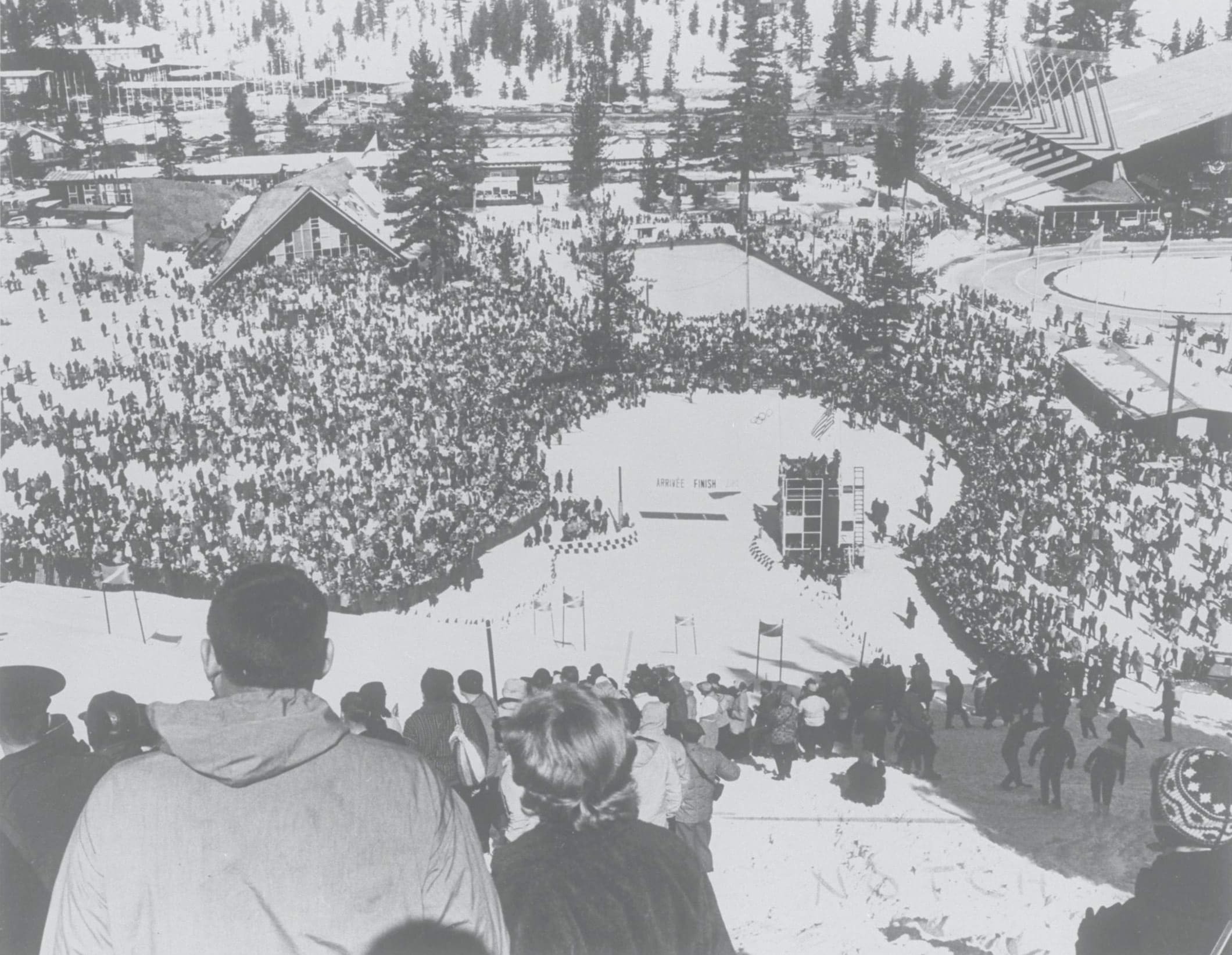Heggtveit opens Canada’s Alpine account
Born in Ottawa (CAN), Anne Heggtveit had winter sports in her blood. Her father was Halvor Heggtveit, Canada’s Norwegian-born cross country skiing great of the 1930s, while her uncle was Bud Clark, who took part in the cross-country, Nordic combined and Alpine skiing events at Lake Placid 1932 and Garmisch-Partenkirchen 1936.
A precociously talented skier, Anne was just two when she first took to the slopes, and she was winning her first competitions by the age of seven. Eight years later, in 1954, she became the youngest ever winner of the giant slalom at the Holmenkollen Ski Festival in Norway, and was still a teenager when she competed in all of the women’s Alpine skiing events at Cortina d’Ampezzo 1956, where her best result was 22nd in the downhill.
Her progress to the top was subsequently slowed by a string of injuries. Regaining full fitness in 1959, Heggtveit prepared for the following year’s Winter Games in Squaw Valley with two months of training in Europe and the USA. He second Olympic campaign began with two 12th place finishes, in the downhill and the giant slalom.
As she later acknowledged, her main target had always been the slalom, which took place on Little Papoose Peak on 26 February. Though she almost wiped out at the tenth of the 53 gates, her all-out attacking style paid dividends, with her first-run time of 54 seconds giving her a lead of 1.5 seconds over her closest pursuer, Austria’s Marianne Jahn, while the rest of the field was another 1.5 seconds off the pace.
“I didn’t have a race plan, but that wasn’t a problem,” Heggtveit later explained. “The level of competition was so high, there was no question of holding anything back. I just threw myself into trying to win both runs.”

Jahn was disqualified on her second run, with the USA’s Betsy Snite posting the fastest time of 55.5 to set a target for the Canadian, who was determined, once again, to give it everything she had.
Despite dropping low on an early gate and losing a few tenths, Heggtveit was still second fastest on the second run, just a tenth behind Snite and more than three seconds clear overall. Her performance secured her a place in Canadian Olympic history as the country’s first ever Alpine skiing gold medallist. Germany’s Barbi Henneberger completed the podium, nearly seven seconds behind the new champion.
The indefatigable Heggtveit went on to win FIS world titles that year in the slalom and the combined. She then secured the prestigious Arlberg-Kandahar Trophy and the Lou Marsh Award as Canada’s most outstanding sportsperson of 1960.
Heggtveit’s success in Squaw Valley made her a media sensation and she was greeted by huge crowds on her return to Ottawa. Though she retired from competitive skiing at 21, she was inducted into Canada’s Sports Hall of Fame in 1960 and then the country’s Olympic Hall of Fame in 1971. Five years later, she was made a member of the Order of Canada, and the most difficult of the black runs at her home ski resort of Camp Fortune is named in her honour.